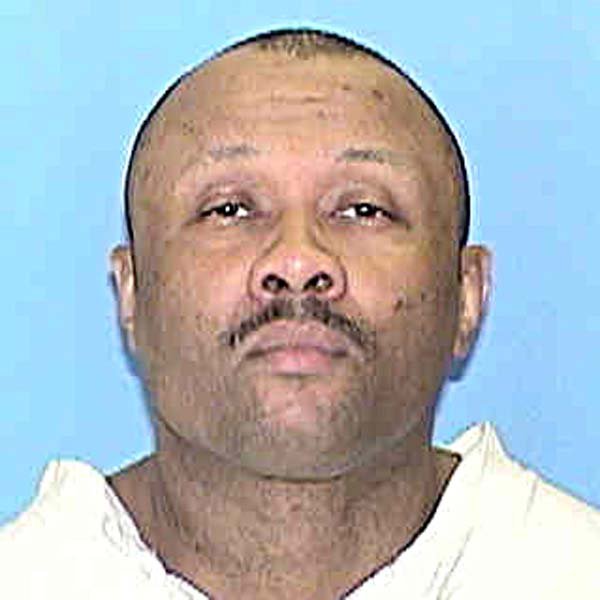LITTLE ROCK — Prosecutors filed capital murder and rape charges against John B. Yancey Jr. on Monday, just over 20 years after Treva Parks’ body was found in her Little Rock apartment.
Yancey is in an Arkansas prison for other crimes. He could be arraigned as soon as next week.
Vicki Naftzger discovered her sister dead in her 120 1 /2 S. Pine St. apartment on July 1, 1990. Parks was lying face down in her bed, naked and covered in blood.
Naftzger, who lives in Little Rock, praised Little Rock police detectives Tuesday for being “thorough and compassionate,” saying she’s thankful that they didn’t give up on her sister’s case.
“We are confident that the evidence will be compelling enough to prevent John Yancey from harming another innocent woman and her family,” she said.
Police early on ruled out a handful of suspects in the killing. Nearly two decades passed without any breaks in the case.
In January, police received an unexpected lead.
As part of an automated cross-checking system, a “DNA hit” sprang from a database at the state Crime Laboratory, stunning detectives and forensic scientists familiar with the case.
“It’s what I consider these days to be a typical success story of how the database works,” state Crime Lab Director Kermit Channell said Tuesday. “It shows whylooking at these old cases is so important.”
Tests indicate that blood on a towel left in 33-year-old Parks’ apartment belonged to Yancey, a felon with a string of burglary and theft convictions.
Parks’ family was stunned to learn that police believed she was killed by someone they didn’t know.
Because so many years passed without movement in Parks’ case, her family and others came to assume that her killer was dead. Because of the personal nature of the violence committed against Parks, they also assumed that her killer was someone she knew well.
Detectives long believed that Parks’ death was a crime of passion or jealousy because she had been stabbed in the face, an act rarely committed by a stranger.
Shortly after Parks’ murder, Yancey, now 40, entered the Arkansas prison system for burglary and theft convictions in Little Rock, where he was living.
After his October 2000 release, Yancey made his home in Louann in Ouachita County.
Yancey drew attention from law enforcement again on Feb. 21, 2009, when a dramatic turn of events put him on the Camden Police Department’s radar.
On that afternoon, police say, Yancey flew into an intoxicated rage, bit a chunk out of his wife’s face the size of a small saucer and led officers on a high-speed chase. One of his children, not wearing a seat belt, was in the car.
The chase ended when the engine of Yancey’s car seized up after he repeatedly rammed two police cars that had boxed him in.
As officers pointed guns at him, Yancey used the child in the car as a human shield.
After his arrest, which required the use of stun guns, Yancey was booked into the Ouachita County jail.
On Sept. 21 last year, he was convicted of first-degree domestic battery and aggravated assault. He was transferred to the state Department of Correction’s diagnostic unit on Oct. 1. A few days later, he was transferred to the Varner Unit in Grady, where he remains.
Prison employees swabbed Yancey’s cheek for a DNA sample when he entered the state’s system, as they do with all convicted felons. His DNA was entered into the state’s database in early December. Soon after, lab officials discovered that his DNA matched DNA collected from Parks’ apartment after her slaying. They notified Little Rock detectives of the “hit” Dec. 14.
Detectives obtained a warrant Jan. 12 to have Yancey transported from the Varner Unit to Little Rock so they could obtain a new DNA swab to confirm the earlier hit from the Combined DNA Index System (CODIS), a national database. The confirmation swab is routine. Detectives also obtained a fresh set of fingerprints from Yancey to compare with ones found in Parks’ apartment.
Although Yancey had been in state custody in the 1990s, his DNA hadn’t been collected before October 2009. When Yancey served time before, state laws required that DNA be collected only from those convicted of sexual and violent crimes.
In 2001, legislators expanded the law to include those convicted of burglary, but Yancey had been released Oct. 25, 2000. His parole period ended May 3, 2001.
State Crime Lab analysts revisited Parks’ case in 2001, when DNA was added to the lab’s forensic toolbox. They extracted an unidentified man’s DNA from the bloody towel that was one of dozens of pieces of evidence saved from Parks’ one-bedroom apartment.
Police used the DNA to rule out Parks’ ex-boyfriend, a man her family long suspected had killed her.
The investigation stalled after the ex-boyfriend was eliminated as a suspect.
Lab technicians entered the DNA, which investigators believe belonged to the killer, into the national CODIS database. They hoped that someday a suspect would surface.
John Johnson, who filed charges Monday against Yancey in Pulaski County Circuit Court, declined to comment on details of the case.
Arkansas, Pages 11 on 07/28/2010
